#the case of the Cunningham Heritage
Photo
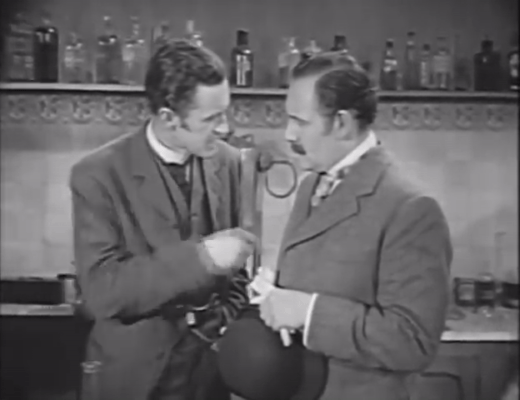

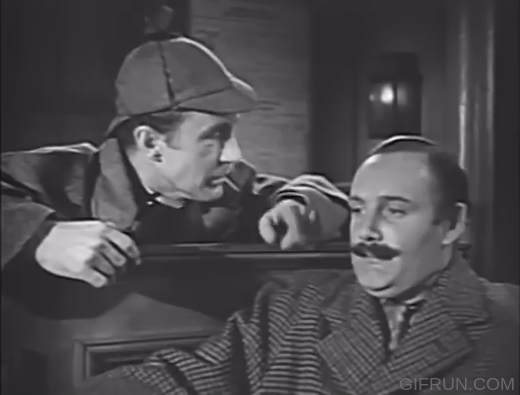
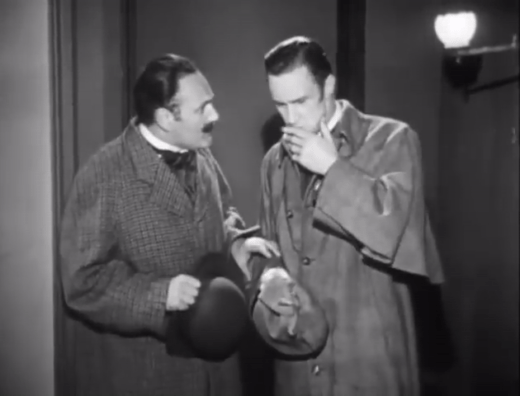



Holmes pokes/ touches Watson with one finger from the first day they met and Watson quickly picks up the habit himself, and even starts poking Lestrade too
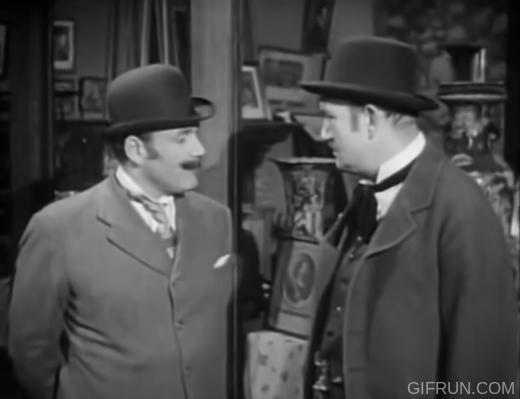
#1954 Sherlock Holmes#ronald howard holmes#ronald howard#doctor watson#sherlock holmes#holmes and watson#inspector lestrade#the case of the Cunningham Heritage#the case of the belligerent ghost#The Case of the Singing Violin#the case of the Vanished Detective#the case of the Pennsylvania Gun#the case of the jolly hangman#the case of the night train riddle
233 notes
·
View notes
Text


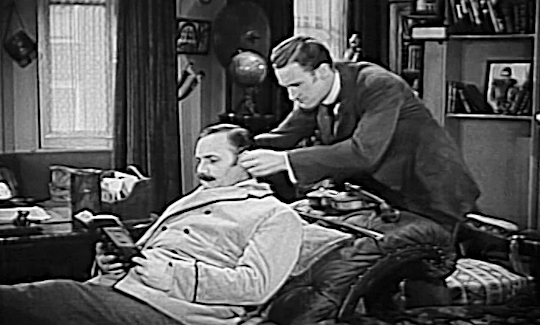
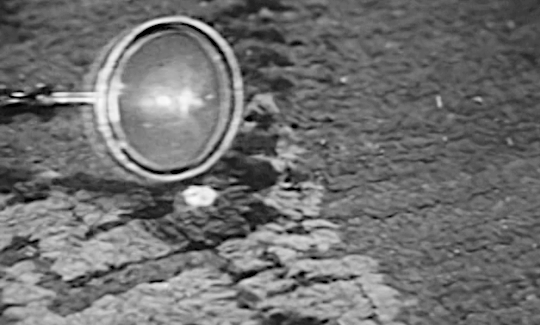
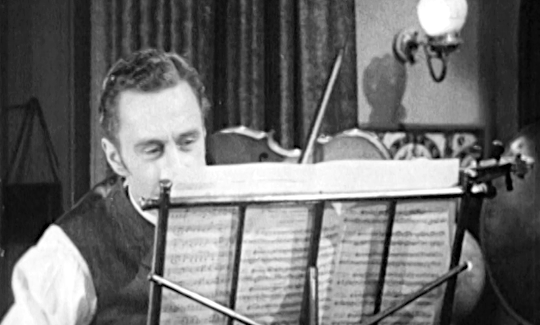
My favourite Holmes adaptations (in no particular order)
-> #4 Sherlock Holmes (1954 - 1955)
#sherlockedit#sherlockholmesedit#ronaldhowardedit#howardholmesedit#*#howard holmes#*howard holmes#favourite holmeses#the case of the baker street nursemaids#the case of lady beryl#the case of the violent suitor#the case of the cunningham heritage#the case of the shy ballerina
64 notes
·
View notes
Text
Meduza:
Time to revisit Kant, that ole Russian war trophy: In remarks on Immanuel Kant’s 300th birthday, Kaliningrad Governor Anton Alikhanov said the German philosopher’s legacy must be “revisited” in light of attempts by Russia’s enemies “to hide behind Kant's legacy.” Alikhanov also described Kant as a “Russian trophy, like everything you see in the Kaliningrad region,” referring to the USSR’s capture of the region in WWII. In February, Alikhanov told a group of political strategists that Kantian philosophy is directly related to the “global chaos” and “global reorganization” now facing Russia.
Official calls for investigation into torture allegations from Russia’s worst prisoners: The country’s human rights commissioner has asked the Prosecutor General to investigate a report from Presidential Human Rights Council member Eva Merhacheva claiming that guards at “Black Dolphin Prison” are torturing inmates. Merhacheva says she forwarded information received from inmates’ relatives to Commissioner Tatiana Moskalkova and federal prosecutors and investigators. The allegations describe painful stress-positions, beatings, and electrocutions. “Black Dolphin” houses roughly 700 of Russia’s worst prisoners, all sentenced to life for various violent crimes.
Heels dug in over Chechen official’s DUI: Regional police officials have confirmed that the head of Chechnya’s Emergency Management Agency attacked arresting officers when he was pulled over for drunk driving on April 14 on a highway between Chechnya and Dagestan. Ramzan Kadyrov has defended Alikhan Tsakaev, claiming that he is being framed for a DUI. The Chechnya governor has called on the head of Dagestan to dismiss the case, but Governor Sergey Melikov has vowed to defend his own republic’s police force.
Too gay for the printed page: AST, one of Russia’s biggest book publishers, says it will stop selling several books by Vladimir Sorokin, Michael Cunningham, and James Baldwin after an “expert review” found that the work in question violates Russia’s expanded ban on “gay propaganda.” The books getting the axe: Sorokin’s Heritage, Cunningham’s A Home at the End of the World, and Baldwin’s Giovanni's Room.
1 note
·
View note
Text






Max Mara SS24
Luke Leitch's full review for Vogue:
Formed during World War I and mobilized anew for World War II, the Women’s Land Army recruited up to 80,000 females to farm while Britain’s men took up arms. Along with the women working in munitions factories, as nurses, in auxiliary military service, as air raid wardens, and in many other vital non-combatant roles besides, the so-called Land Girls were a vital part of the war effort. By fortunate necessity they also in part catalyzed the emancipatory precedent for women to take their place in the workforce.
The Women’s Land Army proved a fertile source of inspiration for Ian Griffiths at Max Mara this morning. The collection that flourished from it was cultivated rather than rustic—more Phoebe Waller-Bridge channeling Monty Don shot by Sam Mendes at Sissinghurst and less tilling for beetroot—but it contained many authentically researched touches while also working wonderfully as a luxuriously utilitarian woman’s wardrobe for now.
Bill Cunningham bleu de travail in various garment-dyed shades of cotton was applied to long Don-style work jackets, backless narrow-cut apron-front pencil dresses, double-kneed narrow-cut work pants, and bellows-pocketed and epauletted shirt-skirts and overalls. The palette pivoted to rosy pinks as Griffths pruned his hemlines high with patch-pocketed hot pants under a tunic and a romper. Gorgeous leather-edged canvas gardening bags and bridle-leather binocular cases were tucked under the arms of high-waisted green blousons and washed cotton wide-lapel varieties of Max Mara’s heritage-specialism coat. A wide-gauge knit jersey in green featured irregular cotton patches on one shoulder and the opposite arm in tribute to the source-era’s make-do-and-mend ethos.
A highish-hem fishtail parka over wide-cuffed shirt signaled the switch towards more autumnal shades, and the inevitable harvest of core-to-the-house camel. The hotpants and work jackets we’d seen earlier were iterated as knits, and the camel coat in a generously-volumed satin finished fabric. Jodhpur pants, a parachute-strapped corset and what looked like a Pacific-theater US officer’s tunic rather widened the scope of operations before a series of monochrome chintz looks closed this bountiful Max Mara show. Idealized 1940’s Ipswich by way of Emilia Romagna, this classy collection was clearly close to Griffiths’s gardener’s heart.
0 notes
Text
The Case of the Cunningham Heritage
I've had a DVD collection of the American TV series The Adventures of Sherlock Holmes for quite some time now, but hadn't gotten around to watching any of the episodes. The series aired in 1954, and starred Ronald Howard as Sherlock Holmes (no relation to film director Ron Howard). He's actually pretty good, and the first episode, which I've shared below, takes a lot of its material from A Study in Scarlet. I think it's actually worth watching. Enjoy!
youtube
0 notes
Photo


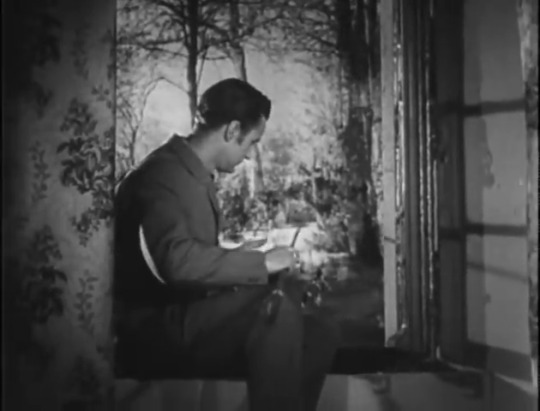
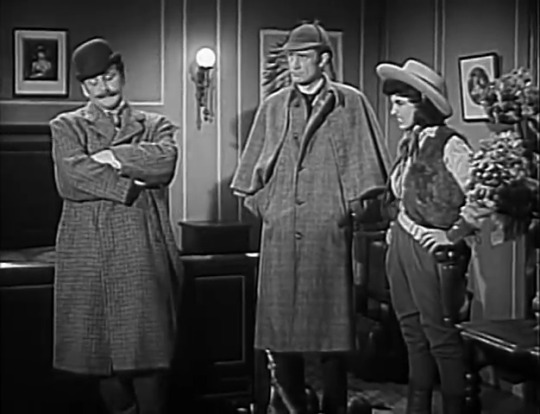
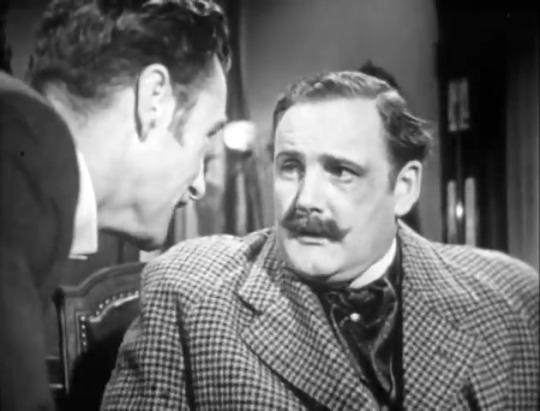
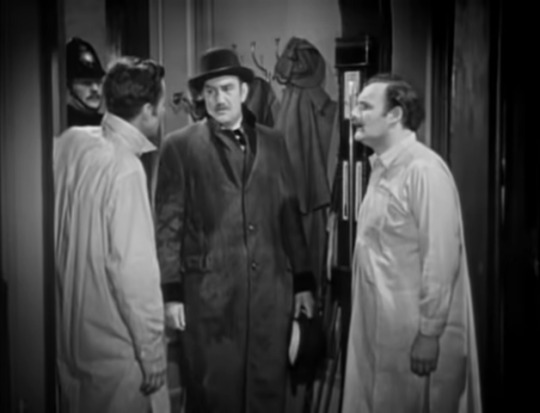
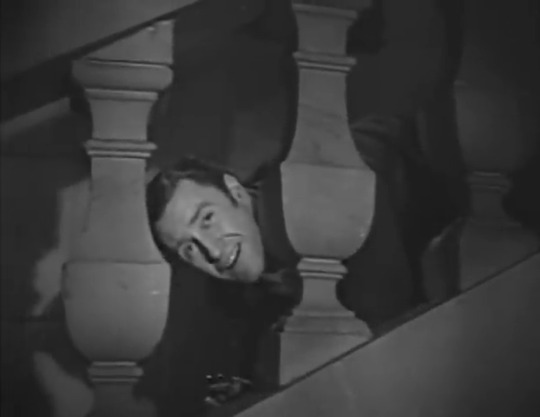

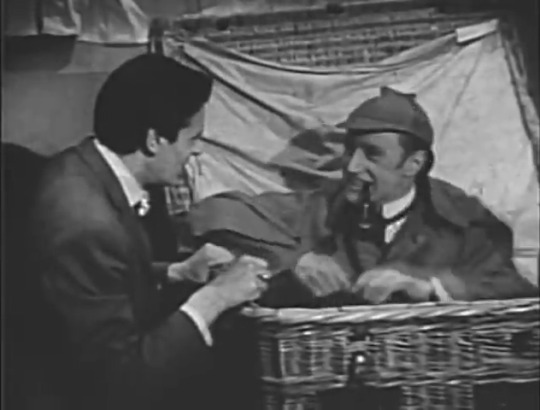

Sherlock Holmes (1954) (Episodes 1 - 10)
У меня не было никаких ожиданий от этого сериала, потому что раньше я про него толком ничего не слышал, и я с некоторой тоской смотрел на приличное количество эпизодов. Кто же знал, что в этом сериале прячется один из самых прекрасных Холмсов, которые я видел?.. Рональд Ховард оказался самым настоящим сокровищем - он куда страннее и чуднее книжного Холмса, больше всего напоминает Холмса из “Этюда в багровых тонах”, то есть он живой, улыбчивый, подвижный и молодой. Его Уотсон, который отнюдь не толстяк, а эдакий коренастый крепыш, хоть и отвечает за комедийную часть их дуэта (впрочем, Холмс в комедии ему не уступает), не является непроходимым тупицей и может, при случае, засветить кулаком неприятелю в морду.
Большая часть эпизодов сняты по самостоятельным сценариям, но в тех десяти эпизодах, что я успел посмотреть, было снято их практически канонное знакомство в лаборатории (но само дело не было “Этюдом”), а еще здесь была немножко вольная экранизация моей любимой “Долины страха”. Сами эпизоды идут по 26 минут и за это время Холмс успевает не только раскрыть дело, но и подурачиться с Уотсоном. Господи, какие же тут прекрасные домашние сценки на Бейкер-стрит, смешные диалоги и сценки, а эти их вечные пикировки с Уотсоном! Вообще у этого сериала общая атмосфера очень... эм, придется прибегнуть к английским словам... lighthearted и whimsical. Они не скатываются в чистую комедию и это уж точно не пародия, а в первую очередь все же детектив.
В первом эпизоде The Case of the Cunningham Heritage, в котором произошло знакомство Холмса и Уотсона и их приезд на Бейкер-стрит, они вовсе не расследовали убийство Дреббера - хотя убийство было, и главной подозреваемой была одна леди. Инспектор Лестрейд - непривычно крупный, усатый и лысый мужчина - тут тоже присутствует, как один из главных и постоянных героев сериала. Уотсон, узнав потом, что все лавры достались именно Лестрейду, пошел с газетой ему чуть ли не морду бить за Холмса. Во втором эпизоде The Case of Lady Beryl делом как ни странно в основном занимаются Уотсон с Лестрейдом, потому что Холмс слишком увлечен химическим опытом и Лестрейду с Уотсоном пришлось Холмса одевать в четыре руки и тащить за собой.
Третий эпизод The Case of the Pennsylvania Gun был, как можно догадаться по названию, той самой экранизацией “Долины страха”. Здесь Холмс одержим рыбалкой и везде ходит с удочками и даже тот самый узелок с гантелей вылавливает именно своей удочкой. Помимо этого констебль замечает, как Холмс (пусть и за кадром) катается по перилам дома убитого - между прочим, это было важно для раскрытия дела, а не просто так, ради развлечения! Четвертый эпизод The Case of the Texas Cowgirl был крайне странным и комедийным - на Бейкер-стрит заявилась типичная ковбойша с сильным американским акцентом, у которой в номере гостинницы обнаружился труп и Холмс чуть ли не под дулом револьвера должен был ей помочь в этой ситуации.
В пятом эпизоде The Case of the Belligerent Ghost" Уотсон заявился домой с фингалом под глазом и утверждением, что его ударил самый настоящий призрак. Разумеется, Холмс не может не взяться за это дело (и мимоходом не сыграть над Уотсоном беззлобную шутку). Впрочем, дело оказалось гораздо серьезнее. В шестом эпизоде The Case of the Shy Ballerina в результате забавной путаницы шляпа Уотсона оказалась на найденном трупе, что сделало Уотсона первым подозревамым, и Холмс подтрунивал, мол, Лестрейд, следите за Уотсоном, как бы он через окно не сбежал. В седьмом эпизоде The Case of the Winthrop Legend с трудом можно опознать “Пять апельсиновых зернышек”, только здесь будущие жертвы помечаются серебряными монетами и это часть семейной легенды. Поэтому Холмсу с Уотсоном пришлось ехать в фамильный замок, где Холмс после отбоя чуть случайно не пристрелил Уотсона из арбалета, а потом после совершенного убийства (не им и не Уотсона) ползал по ступенькам.
Восьмой эпизод The Case of the Blind Man's Bluff отличился тем, что Холмс впервые предстал в маскировке - в том числе и для того, чтобы разыграть бедного Уотсона, который даже велел вошедшему Лестрейду арестовать этого человека - а потом сообщил Холмсу, что это уже чересчур и он отправляется искать себе новую квартиру... Хотя, разумеется, сам эпизод был не про это и весь его сюжет, в общем-то, кроется в спойлерном названии. Девятый эпизод The Case of Harry Crocker был абсолютно прекрасен - и, как ни странно, не из-за Холмса с Уотсоном (хотя они, как обычно, были хороши), а из-за крайне экспрессивного Гарри Крокера, фокусника и мастера побега, которого обвинили в убийстве и который вечно сбегал от полиции (и мастерству которого страшно завидовал восхитившийся Холмс!).
Ну и десятый эпизод, последний который я на данный момент смотрел, The Mother Hubbard Case был про потерявшуюся маленькую девочку... только она отнюдь не была жертвой. Здесь Холмс неоднократно использовал свои навыки взломщика - к ужасу Уотсона. “Вы что, взломали дверь в его кабинет?!” “Ш-ш-ш, вы хотите, чтобы нас арестовали?” “Нас?!” Впрочем, тут был и еще один забавный момент, когда Холмс не был уверен - положил ли он в заварочный чайник, собственно, чай или все ��е змеиный яд?.. (Потому что они у него в одних и тех же склянках, а чай он вечно заваривает на своем химическом столике!).
Какое же это счастье, когда на тебя нежданно-негаданно сваливается шикарный Шерлок Холмс! Может, он и не так сильно близок к книжному образу Холмса и является более вольной трактовкой, мне он куда ближе многих признанных и любимыми всеми Холмсов, включая Рэтбоуна, Ливанова и Камбербетча. Даже жаль, что имя Рональда Ховарда не так на устах, как имена других исполнителей роли Холмса... И как же хорошо знать, что впереди у меня еще немало эпизодов с этой парочкой! Как там говорил в одном из эпизодов мальчишка-посыльный, понаблюдавший немного за ними в гостиной? “Вы чокнутые как мартовские зайцы! Вы оба!” И это правда.
1 note
·
View note
Text
Classic Shocking Theater Season 02 "Elementary, My Dear Ghosty"
youtube
Another one from the archives, this time with a classic Basil Rathbone Sherlock Holmes movie and the first episode of a 1950s TV series.
Legendary Consulting Detective, Sherlock Holmes, and his partner, Dr. Watson, must protect a priceless diamond on a train and then investigate a murder in two different takes on the characters.
Terror by Night and The Case of the Cunningham Heritage are hosted by Justy Ghost because he wanted to watch some Sherlock Holmes.
(Originally from February 2011)
#Basil Rathbone#Nigel Bruce#Sherlock Holmes#shocking theater#justy ghost#b-movie#horror host#Youtube
1 note
·
View note
Quote
Punchy Watson is the best Watson- except for the one that also plays the tuba.
@barachiki
#the giant chat of sumatra#1954 sherlock holmes#punchy watson#punchy!watson#doctor watson#watson#the case of the cunningham heritage#tuba watson#tuba#best watson
4 notes
·
View notes
Photo

Have been watching the Howard/Crawford Sherlock Holmes series recently
#sherlock holmes#chemistry#howard/crawford#howard/crawford sherlock holmes#sh#the case of the cunningham heritage
1 note
·
View note
Photo


Holmes puts the skeleton away when clients are arriving because it is ‘not dressed to receive visitors’, but when the clients leave he immediately gets it back out. Holmes talks to it affectionately and calls it Nebuchadnezzar


Nebuchadnezzar appears in the first episode when Holmes and Watson are moving their things into 221B Baker Street and can also be seen in the storage cupboard behind Lestrade in the case of Harry Crocker

#1954 Sherlock Holmes#sherlock holmes#ronald howard holmes#ronald howard#holmes and watson#doctor watson#221b baker street#inspector lestrade#Nebuchadnezzar the skeleton#the case of the Cunningham Heritage#the case of Harry Crocker#the Mother Hubbard case
134 notes
·
View notes
Video
youtube
The Case of the Cunningham Heritage
Sherlock Holmes (1954) Episode 1:
After his return from Afghanistan, Dr. Watson meets Sherlock Holmes and is recruited as his assistant. Together they investigate a murder, with a young lady as the prime suspect.
YouTube: https://youtu.be/lEk6aElkfT4
Dailymotion: https://dai.ly/x1yhkh4
Archive.org: https://archive.org/details/SherlockHolmes1954/Sherlock+Holmes+01+The+Case+of+the+Cunningham+Heritage.mp4
About | All Episodes | Random Episode
6 notes
·
View notes
Text
Howard Holmes: The Case of the Cunningham Heritage (Pt 2)
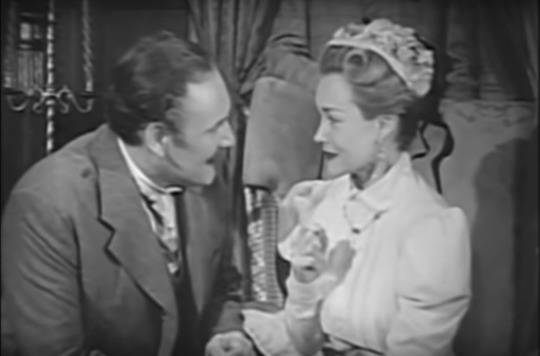
I confess that when it comes to Holmes stories I tend to neglect the cases in favor of examining character and relationship dynamics. Certainly I didn’t think I had anything interesting to say about the case in this episode apart from the ways it continues to reveal aspects of this Holmes and Watson’s relationship. But as I watched it again, I realized that I had nearly missed out on one of the best parts of the episode. For although this case is not in itself especially compelling, its framing contextualizes Holmes and Watson as not merely crime-solvers, but as defenders of the innocent and the unheard.
Introduction, Episode 1 Part 1
After Holmes and Watson receive a letter from Lestrade inviting them on a case, we are removed from their already comforting presence and transported to the scene of the crime, where we see a desperate woman begging three stone-faced onlookers to believe she did not murder her fiancee. The power differential between the woman and her accusers is visually emphasized by her being seated as the others stand over her, and we soon have confirmation of what their positions suggest: her accusers relish wielding their power over her.
The first accuser, being the actual murder, has obvious motives for wishing her to be found guilty; the second, the wealthy mother of the murdered man, is eager to judge a woman she always hated on the basis of her being a poor governess engaged to her son. Lestrade, the third accuser, practically gloats over her pain and proves to be far more interested in concluding the case quickly and looking good in the process than in ensuring justice. By the time it is revealed the woman once spent nine months in jail, her accusers regard it as confirmation of why they already wished to believe.
As a result of this framing, Holmes and Watson are not primarily up against the supposed stupidity of the police-force. The real obstacles are class prejudice, laziness, pride, and a base pleasure in wielding power over the weak. During this case what is needed is not only or even primarily their intelligence, but rather their fair-mindedness and their empathy.
And indeed, the tone of the room does shift the moment they enter. Whereas the previous occupants seemed primarily interested in flinging accusations at the woman, Holmes’s first move is to examine the scene for evidence. Intentionally or not, in doing so he draws attention away from the now sobbing woman, allowing her a moment to compose herself.
For his part, when attention returns to the woman Watson quickly relinquishes his position of power, lowering himself to his knees and offering her comfort. It is true that he stands again when Holmes reveals that she married her fiancee in secret and thus will gain financially from his death, and the woman’s despairing glance at Watson as she finds herself overhung now by four men is a little heartbreaking. But it is worth noting that in the wake of the revelation of her low class-status, former jail-time, and secret marriage, he finds no satisfaction or even complacency in her apparent guilt, insisting despite Lestrade’s assertion that one get’s used to these sorts of things: “I still think it’s a tragedy.”
This series doesn’t always display that level of social critique, and Lestrade, who generally assumes the role of good-hearted buffoon that this Watson has mercifully vacated, doesn’t always appear in a negative light. But I love that the first episode is structured to emphasize that Holmes and Watson aren’t heroes merely because they have unique levels of intelligence and physical capability, but also because their love of truth and their compassion serve as protection against prejudice, complacency, and pride.
My Story:
I don’t have much to add to what I said in part 1. However, if there is a moment in which Holmes begins to fall in love, it is when Watson rescues them from the actual murderer. Obviously Holmes liked Watson enormously from the start, but when Holmes realizes he has led this poor innocent man into mortal danger, only to have said ‘poor innocent’ neutralize the threat with quick efficiency, he looks at the man like … like … well, like this:
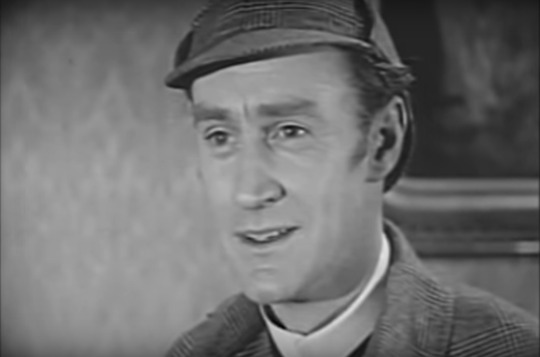
Highlights:
One think I enjoy about the duo’s case-working dynamic is the way Watson immediately becomes Holmes’s confidant for anything from thoughts on the case to snide asides. For example: 11:09–11:22, 12:33–13:00, 15:40–16:25, 19:25–31, 20:17–20:20, 24:11–24:26.
12:33–13:00: Although it ultimately has little bearing on the case, I appreciate that Watson’s medical skills are immediately made use of.
19:44: A Baker Street Irregular!!!
20:17–21:36: Honestly, few scenes better encapsulate this iteration of the duo than Holmes proposing illegal means of investigation and Watson objecting every step of the way without once raising a finger to stop Holmes or remove himself from the situation.
22:41–22:46: I briefly discussed Watson taking out the murderer, but I have to mention this eloquent exchange of looks: Holmes: “I’m sorry Watson, I don’t know what to do and I shouldn’t have brought you here.” Watson: “Well, I did tell you, but I’m not frightened.”
23:47–23:51: Watson is so very delighted at having the chance to be useful and impressive (despite Holmes having just dragged him into a potentially lethal situation) and it’s adorable.
23:57: “Only a man could have struck that blow” …………… *sigh*
24:42–25:36: Two days in and Watson has already appointed himself Holmes’s knight in shining armor, defender of his honor. I love him.
25:36–25:53: I have mixed feelings about Holmes’s response to Watson’s outburst, which is to wonder whether Watson may have suffered a head injury while abroad. The observation always struck me as a bit mean-spirited, but I still enjoy it’s implications for two reasons: first, this adaptation refuses to cast Watson as the straight-man, the mad detective’s ‘normal’ associate. In case the audience hadn’t picked up on that when Watson broke into a house with a man he met the day before, Holmes’s musing make this quite clear. Secondly, I am intrigued by the fact that this is the action which leads Holmes to question his partner’s sanity—it doesn’t seem to occur to Holmes that Watson’s behavior might be easily explained by the fact that Watson cares about him.
@the-prince-of-professors @tremendousdetectivetheorist @devoursjohnlock@mafief @the-hopeless-existentialist@irishunic0rn @a-candle-for-sherlock @rfscommonplace @acdhw @artemisastarte
#howard holmes#howard holmes meta#sherlock holmes 1954#sheldon reynolds#Howard Marion-Crawford#ronald howard#I actually made this 1/3 shorter than the last one!#it was harder than writing it in the first place#and still ridiculously long ...#i really might have to do away with the 'my story' and 'highlights' sections#i suppose it will depend on whether my desire to write them#or my desire to have people actually read this thing#wins out
40 notes
·
View notes
Text

Howard Marion-Crawford and Ronald Howard in “Sherlock Holmes: The Case of the Cunningham Heritage.” Stamford said, “Somehow, one never thinks to question him.” Now Watson has known Holmes for 24 hours and they’re moving into Baker Street and unpacking lots of physical and philosophical stuff.
#nabiscobuzzcut's first appearance :') you're doing amazing sweetie#howard holmes#does this count as a watson wednesday sort of#holmes and watson#domestic#love how watson accepts him#such trust too#he's Their skeleton baby now!#i kinda missed those aspects of watson when i first watched this!#usually i'm so focused on holmes
58 notes
·
View notes
Text
Sherlock Holmes movies | The Case of the Cunningham Heritage | Sherlock Holmes tv series 1954
Sherlock Holmes movies | The Case of the Cunningham Heritage | Sherlock Holmes tv series 1954
Sherlock Holmes: The Case of the Cunningham Heritage | After his return from Afghanistan, Dr. Watson meets Sherlock Holmes and is recruited as his assistant. Together they investigate a case, with a young lady as the prime suspect. Holmes finds the real criminal and learns his motive.
Detective Television Series | Sherlock Holmes Tv Series for free online
Dr. John Watson meets private detective…

View On WordPress
#best detective tv series#Cunningham Heritage#detective movie#detective series#detective tv stories#free tv series online#mystery movie#mystery movies#sheldon reynolds#sheldon reynolds sherlock holmes#sherlock#sherlock holmes#sherlock holmes and dr watson#sherlock holmes detective movie#sherlock holmes detective stories#sherlock holmes english#sherlock holmes movies#sherlock holmes murder mystery#sherlock holmes tv series#sherlock holmes tv series 1954
1 note
·
View note
Quote
I'm going to help some people by stabbing them.
@silver-boots
#the giant chat of sumatra#sherock holmes#the case of the cunningham heritage#1954 sherlock holmes#helping#helping or hurting#stabbing#stabbity#stab#violence#sherlock holmes
2 notes
·
View notes
Text
Contributor Susu is back with an ode to her heritage.
My Hispanic Heritage in Film: The Old, The New, and The Internal Spark
I sit here with you, finally, after weeks of pondering the threads that might tie my next movie list together. Last month was National Hispanic Heritage month and as a daughter of Spanish-speaking parents, I humbly and proudly begin there, on that corner of a gorgeous and intricate tapestry of humanity and culture.
I am woven into the tapestry with thread the color of Cuba, which is where my parents and a long line of ancestors were born. Things B.C. (before Cuba) are still a mystery. My DNA shows no sign of indigenous blood, which means that the threads extend across the Atlantic to Europe and Africa. But that’s another story. For now, and for about 200 years, with the exception of my maternal grandfather, my family tree and its history is firmly rooted in the westernmost province of Pinar del Río, Cuba.
As simple as that should be, as singular a representation of culture it might offer, it is not. I discover that, as I try to choose the handful of movies to share with you here, there are in fact several Cubas that express themselves to me in life and in film.
The first is the mythological Cuba, the one that lives behind the mist of nostalgia that envelopes the pre-Castro-Revolution generation, the Caribbean Camelot set in lush mountainsides, swaying to the sound of town sociedades, and thriving with the hope of a sunlit main street. It is, in my mom’s words, the image of un pueblo alegre.
The second is the new Cuba, the one I visited for the first time 15 years ago, which is decidedly “other.” It’s an “other” so drastic that my mom, having been gone for 40 years, didn’t recognize it as she moved through its haunted streets again. While described by many as being “frozen in time,” the phrase is inaccurate. What’s frozen is still. Preserved. And that’s not the truth of Cuba. What might be the country’s motto is injected into every conversation: No es fácil. It’s not easy. The island is structurally compromised by lack of resources and culturally limited by the lack of ideological flexibility, yes. But make no mistake, it not frozen. It is living, breathing, moving forward.
In writing this post and examining my movie list, I discover a third, more personal place. An internal spark. My guess is that it lives and breathes in all sons and daughters of immigrants. I don’t think of it, any more than I think of blinking or scratching an itch. But it’s there, at work all the time, activated when I switch from English to Spanish in conversation, or when I hear Salsa and absolutely…must…dance.
All three places, the old, the new, and the internal spark, are my heritage. Here are a few of the movies that shed some light on them:
The Lost City (2005), directed by Andy Garcia, written by Guillermo Cabrera Infante: “Everything I love is in this movie, including my kids.” These are Andy Garcia’s words while promoting the film in interviews. My words would be “epic poem.” The story is set on the island itself in the year leading up to Castro’s revolution in 1959, and is centered on the conflicting ideologies of three brothers. Among the elements I love most are the cast of mostly Cuban actors, and a soundtrack of original, classical music that reduces me to tears.
Before Night Falls (2000), directed by Julian Schnabel, written by Julian Schnabel, Cunningham O’Keefe, and Lazaro Gomez Carriles. Based on Reinaldo Arenas’ memoir of the same name (Antes Que Anochesca), the story visits Arenas’ struggles from destitute childhood to homosexual manhood in an unforgiving culture of fear and repression. To know that Arenas began writing this book after he was diagnosed with HIV, knowing that his life would end and how he would end it is its own tragedy and triumph. Javier Bardem as Arenas is flawless. Keep your eyes open for Johnny Depp and Sean Penn, who looks so much like one of my uncles I had to do a double-take.
Strawberry and Chocolate (Fresa y Chocolate) (1993), directed by Tomas Gutierrez Alea and Juan Carlos Tabio, written by Tomas Gutierrez Alea and Senel Paz. I’ve lost count of how many times I’ve popped this movie into my DVD player. It stars a delicious Jorge Perugorría as gay man and intellectual, and Vladimir Cruz as fiercely heterosexual male and devoted son of the communist revolution. I love every single thing about this movie, beginning with the fact that it was actually filmed in Cuba. I don’t know how the cast was able to film this story. The themes and conversation between these characters is strictly forbidden by the state, prompting the authorities to ban the movie on TV for 20 years after it was released in theaters. It is the only Cuban film ever to have been nominated for an Oscar and oh yeah, it was produced by Robert Redford.
Guantanamera (1995), directed by Tomas Gutiérrez Alea and Juan Carlos Tabio, written by Eliseo Alberto, Tomas Gutierrez Alea and Juan Carlos Tabio. Peruggoría stars in this film as well, but this time as a truck-driving macho man with a sexual partner at every stop along his route. The story, though, is not just about him, but about Cuba itself. If you want a story of how things “go” in modern-day life and the spirit in which the people on the island approach their struggles, this would be the one to watch. This is another one I’ve countless times for its authenticity, absurdity, and laugh-out-loudness.
Chef (2014), directed and written by Jon Favreau. I admit it. More often than not, I watch a movie from the comfort of my couch. Which means I fall asleep. My commitment to the movies and creativity forces me to watch a film again and again until dammit, I get through the thing. This, however, was not the case with “Chef.” It is a joy, a gem, and a riot. To add to Jon Favreau’s signature style and conversational wit, we have John Leguizamo as his character’s partner, a Cuban sandwich truck as the “dream,” and a few moments of perfection from another favorite, Bobby Cannavale, who delivers the word “lechón” like a philharmonic delivers Mozart. Cannavale is half-Cuban, which explains his perfect pitch.
The Motorcycle Diaries (2004), directed by Walter Salles, written by Enesto “Che” Guevara, Alberto Granado and Jose Rivera. As most know, Ernesto Guevara is a complex figure, received by some as hero and by others as cold-blooded assassin. In silent deference to my tribe I rejected this particular film for a long time, believing it would depict a romanticized version of a man I didn’t want to know or forgive. In the end, my curiosity and desire to understand took over and years after it was released, I watched it. You don’t need a critique from me to know it’s a wonderful film. I am glad that I watched it and would like to believe that as a young man, Guevara’s intentions were true, and that he was, like many in power, tragically derailed by his ego. Gael García Bernal (as Che) and Rodrigo de la Serna (as Alberto Granado) are magical together.
Spanglish (2004), directed and written by James L. Brooks. To start, I am not an Adam Sandler fan but was happily surprised by his role as quietly desperate father, husband and chef. I choose this movie for this list, though, because of Paz Vega and Shelbie Bruce, who play immigrant mother and American daughter in ways too familiar and plentiful to enumerate. Translating conversations between my mom and non-Spanish-speaking folks is the story of my life, and this movie handles that reality with humor, grace and dignity. Plus, Cloris Leachman. I could not love a woman more.
Dance With Me (1998), directed by Randa Haines, written by Daryl Matthews. This one’s a feel-gooder, a love story with the requisite gorgeous people who don’t get along at first but find each other later. There’s nothing really different about this film’s themes and conflicts, nor is the acting a thing of Oscar-worthy proportions. But there is a scene…in a club…with Albita, a famous Cuban songwriter/singer, performing…where the Salsa just…takes OVER. I‘ve watched that scene a thousand times. It is pure joy. I saw this film in the theater with my mom. In the middle of that same club scene, just as I wondered whether my dad – a fantastic dancer in his youth – had danced like that, my mom pulled me close and said, “Así era en Cuba.” “That’s how it was in Cuba.”
The Mambo Kings (1992), directed by Arne Glimcher, written by Oscar Hijuelos and Cynthia Cidre. The book “The Mambo Kings Play Songs of Love” by Oscar Hijuelos was awarded a Pulitzer Prize for Fiction. And so, imagine my surprise when the movie version was a travesty. I don’t know what would have saved it or made it right, but I believe it begins with casting someone other than Armand Assante, whose rendition of Cuban Male is a constant sucking in of the cheeks and strutting like a peacock. Everything about him was wrong, from his accent to his sense of rhythm, and the movie suffers dearly for it. And yet, here it is on my list because Antonio Banderas does do justice to his role, because my beloved Celia Cruz appears in several scenes, and because of a perfect moment in a club scene in which a man, an amazing dancer, jumps out of his chair and begins a conga line. It is everything.
Vicky Cristina Barcelona (2008), directed and written by Woody Allen. I don’t have one heck of a lot of patience for Woody Allen’s characters. There, I’ve said it. And so again, I didn’t run to the theater to watch this when it first came out, even though I would watch Javier Bardem and Penélope Cruz read the newspaper. But one day I watched. And holy cow, when Bardem’s character proposes a trip to Oviedo, I nearly broke a kneecap as I hurled myself closer to the screen. You see, Oviedo, a town in northwest Spain, is where my maternal grandfather is from. I know close to nothing about him. He died when my mom and her siblings were too young to remember him. Oviedo is the one item on my bucket list, my mystery, and a branch in my tree that I hope to learn more about one day.
This post is dedicated to my father, Oscar, who passed away 37 years ago, and who is fully responsible for the part of me that absolutely…must…dance.
◊
Susu is getting her movie fix here and I couldn’t be happier about it, but she writes regularly at Sin Zapato, a barefoot blog wherein she shares insights on being. Take a look at it here or via the link on this blog’s home page.
My Hispanic Heritage in Film: The Old, The New, and The Internal Spark Contributor Susu is back with an ode to her heritage. My Hispanic Heritage in Film: The Old, The New, and The Internal Spark…
2 notes
·
View notes